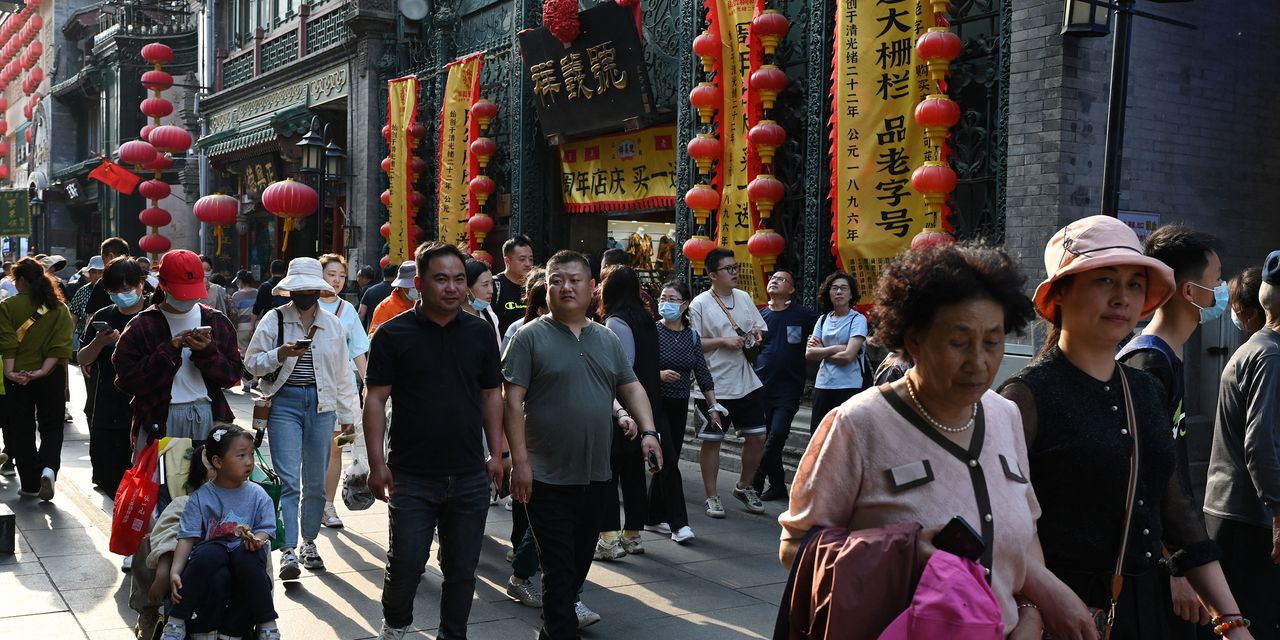“Taco Tuesday” used to be one of the biggest draws for Mexican restaurant Taki Taki, located in the tourist city of Dali, in China’s scenic Yunnan province.
One recent Tuesday evening, however, there were no customers for the special taco prices on offer, said Hua Li, the restaurant’s manager. Before the pandemic, Taki Taki drew hordes of foreign English teachers and backpackers on summer break. “It doesn’t help that there are basically no foreigners anymore,” Li said.
China‘s economic recovery is sputtering, as moderate upticks in much-watched areas like consumption don’t meet sky-high expectations set at the start of the year. Moreover, China still remains relatively closed to the world, even months after it suddenly relaxed domestic controls following three years of Covid restrictions.
In Shanghai—the world’s most populous city and China’s most cosmopolitan—nearly a quarter of Europeans living there haven’t returned after a pandemic exodus, according to the European Chamber of Commerce, with similar estimates from the group’s U.S. counterpart.
Compounding weak confidence in the country’s near-term growth are dim prospects for large-scale stimulus measures from a government that seems to accept that decades of white-hot expansion are over.
Second-quarter data point to an uninspiring outlook for consumer spending, an area that was expected to take center stage as China’s years of manufacturing prowess subdues. Youth unemployment passed the 20% mark last month, according to official data, hitting the pocketbooks of the country’s normally most spendthrift demographic.
“Investors need to recalibrate everything they think they know about the second-quarter economy,” consultancy China Beige Book said in a report Friday.
Households in the world’s second-largest economy were never going to plow all their savings into goods and activities after the restrictions were lifted, Shehzad H. Qazi, chief operating officer and managing director of China Beige Book, told Barron’s.
“That was flawed thinking by analysts who naively suggested that Chinese consumer behavior would be analogous to American consumers,” he said in an email. “That said, consumer spending has continued to get sequentially stronger over 2023 and is certainly better than markets now believe.”
Markets are wincing at the perceived lackluster spending, alongside relatively flat performances in areas such as manufacturing and property. The benchmark Shanghai Composite Index and the Shenzhen Composite Index are on track to lose most of their 10% gains since the start of the year, as a rally up until April turned lower when weak data for the year first emerged. The blue-chip CSI 300 Index and Hong Kong’s Hang Seng Index are both in the red for the year.
And yet, the situation isn’t dire. “Markets have swapped hope in a consumption-powered recovery for a stimulus-driven one, but June data show consumer spending is still churning,” Qazi said. Retail sales in June expanded month-on-month and year-over-year, with the auto and clothing sectors leading the way, he said.
Services sector had a brief rally as May’s two-week travel period gave domestic tourism a bump, but that fizzled, and spending during Dragon Boat Festival holiday earlier in June was lower than prepandemic levels, official data showed.
For whatever consumer rebound there is, it seems to be confined to China’s massive first-tier cities, China Beige Book’s data indicate. That trend seems set to change.
“The evolving consumer class in China shows that its middle-class and affluent consumer population will increase by 80 million by 2030. Nearing 40% of the total population, this segment will become a source of long-term resilience for the Chinese consumer market,” Boston Consulting Group said in a report.
But among these 80 million new affluent consumers, over 70% will be from third tier cities and below, resulting in a huge rise in the consumption share for lower-tier cities, the report said.
Investors often don’t realize that China’s long-running inability to kickstart consumption does not appear to be due to a lack of disposable income.
“Labor compensation as a share of GDP is fairly normal in China. After taxes, wages actually account for an unusually high share of GDP in China,” said Adam Wolfe, emerging markets economist at Absolute Strategy Research.
The main culprit is China’s tax structure, which drives excess household savings.
“China hardly taxes income, but its VAT take is fairly normal, which is effectively a tax on consumption,” he said. Plus, China has numerous mandatory savings policies such as funds for housing, healthcare, and pensions.
This is essentially a regressive taxation system that poorly redistributes income, keeping the lion’s share of money in higher net-worth households, which save disproportionately more than lower-income homes.
“Consumption is central to the government’s plan to boost domestic demand. But the policies it has proposed will likely have little impact on household saving behavior,” he said.
Write to [email protected]
Read the full article here


